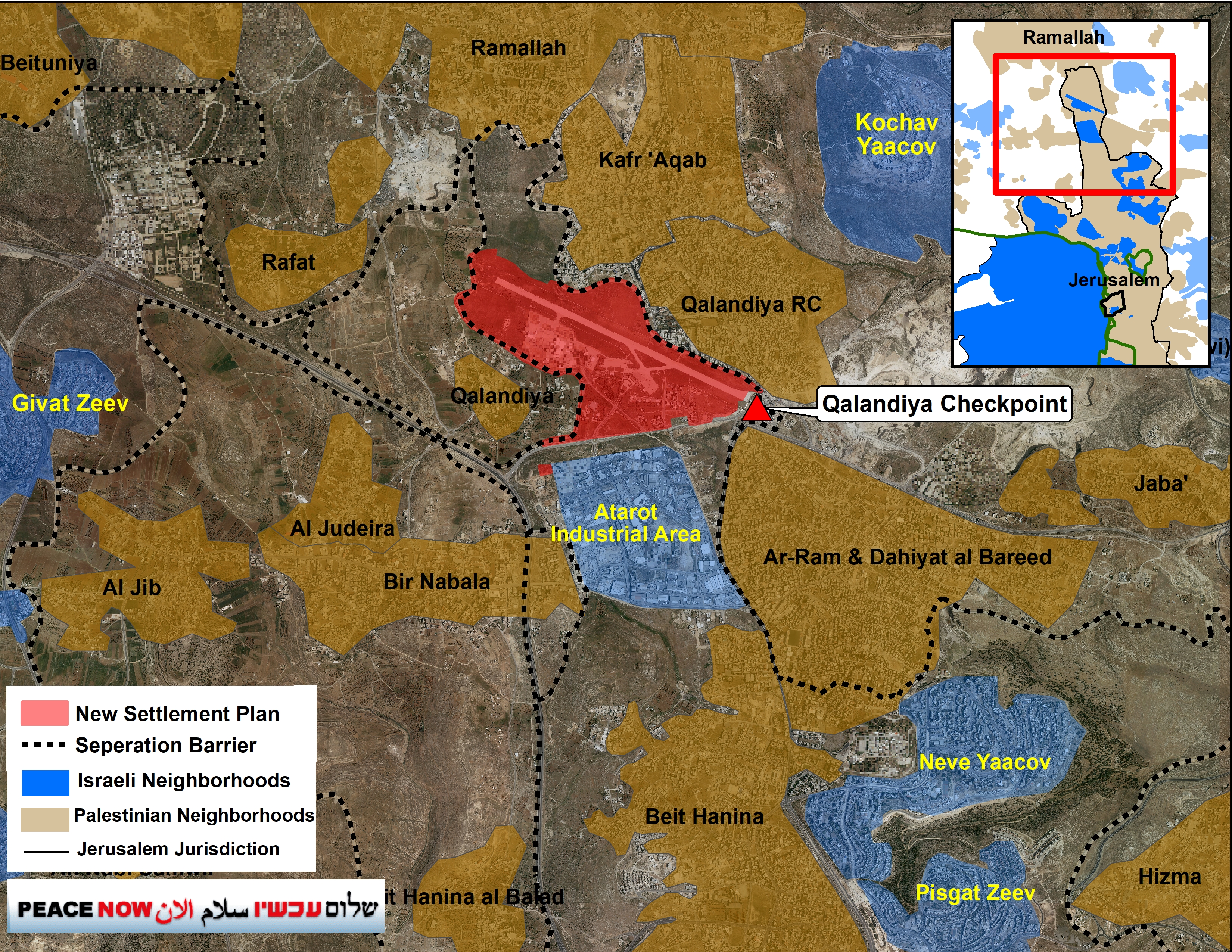This week it was published that a date was set for promoting a new settlement in Atarot, as a “neighborhood” of East Jerusalem. The plan (no. 764936), which was prepared by the Ministry of Housing, is for 9,000 housing units in the Atarot Airport territory, between the Palestinian neighrbohoods of Kfar Aqab, Qalandia and A-Ram south to Ramallah. On the Jerusalem District Planning Committee’s agenda it has been set that on the 6 December 2021, a discussion will take place about the deposit of the plan. Approval of deposit is the first approval of two main approvals necessary in any plan approval process. After the approval for deposit, the plan is advertised for deposit and the public may file comments and objections within 60 days of publication. After hearing the objections in the Objections Sub-committee of the District Committee, the plan is brought to be validated. Then the plan is published and construction permits can be issued for the building to commence.
If this plan is approved and built, this will be the first new settlement in East Jerusalem since Netanayhu’s government built the Har Homa settlement in 1997.
Peace Now: this is a very dangerous plan which might bring a dangerous blow to the two state solution. The planned neighborhood is at the heart of the urban territorial Palestinian continuity between Ramallah and East Jerusalem, and thus prevent the possibility of a Palestinian state with East Jerusalem as its capital. The government must remove the plan from the agenda immediately and shelve it.

Location and political meaning
The plan is at the heart of of the urban territorial Palestinian continuity starting in Ramallah, through Kfar Aqab and Qalanadia, to Beit Hanina and Shuafat where hundreds of thousands of Palestinians live. The plan was meant to sever the Palestinian continuity and become an Israeli enclave which would prevent Palestinian development of the most central and important metropolin in the future Palestinian state, the Jerusalem Ramallah- Bethelehm metropolin. Founding an Israeli neighborhood ranging thousands of housing units, which means tens of thousands of Israelis, would make any future two state based agreement difficult due to the lack of Palestinian continuity and harming the possibility to found a Palestinian capital in East Jerusalem.
The planning stage
In February 2020 the Ministry of Housing filed the plan to the Jerusalem municipality to prepare it for approval. The plan passed the bureaucratic stage of preparation in the planning department in the Municipality and in the District Planning Bureau, within a few months, so it seems, but hasn’t been brought for approval yet. The date of discussion of depositing a plan is usually determined by relevant clerks in the district committee, but when a plan with such far reaching political consequences such as the Atarot plan is discussed, this is approved by the political ranks, especially when this is initiated by a governmental office (as mentioned, this plan was seemingly ready for discussion for over a year but wasn’t brought forth for approval). If a discussion in December does take place and the plan is approved for deposit, and if everything occurs quickly and efficiently and without further political or legal stallings, the plan might be approved within six months or a year— after depositing the plan for objections, hearing them and final approval for validation.
As this plan is initiated by the government on “state lands”, after the plan is validated another stage of tender of choosing building contractors is necessary. The bidding process of publication of the tender and awarding the winning bids, usually takes between six to twelve months, and after that, the contractors can apply for construction permit from the municipality (a procedure that could take one or two years), and only then building can commence.
Land ownership
most of the plan counts as “state lands” since the days of the British Mandate when an airport was built in it. This fact enables Israel to build the settlement without the need to confiscate lands from their Palestinian owners. At the same time, large parts of the land count as private land and the plan is aimed to create a procedure of “unification and division” (without agreement) according to which all land owners get a certain part according to the value of the land they own. It should be noted that the plan aims to demolish several buildings and Palestinian housing units that have been built in the area over the years.

